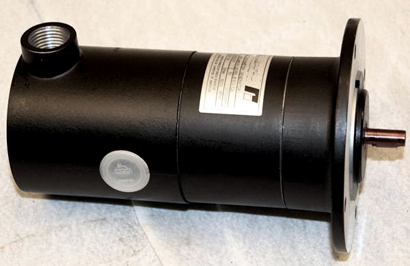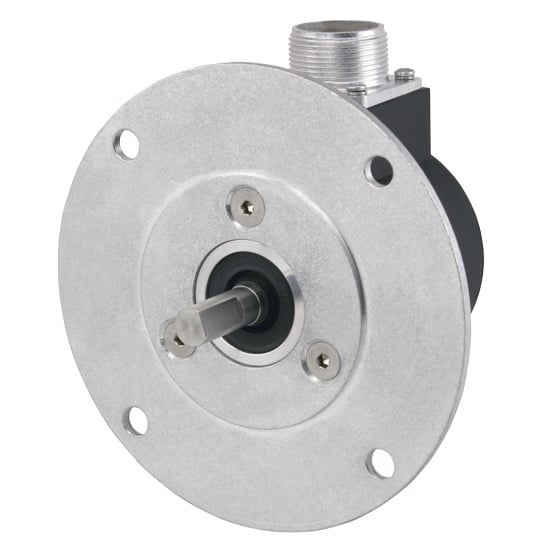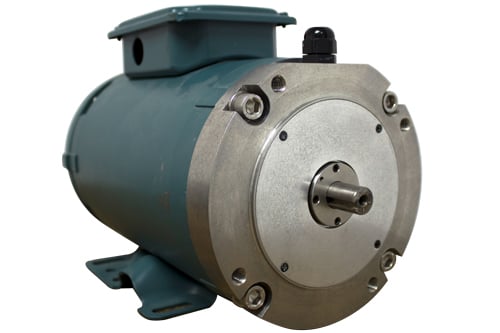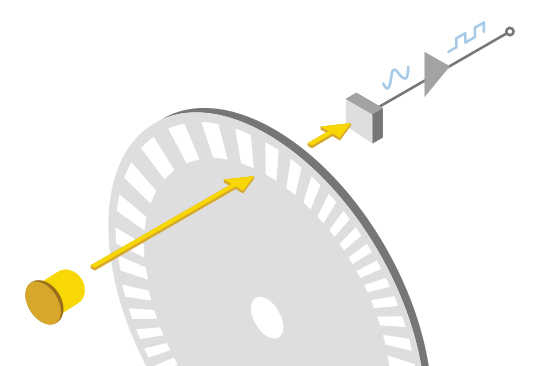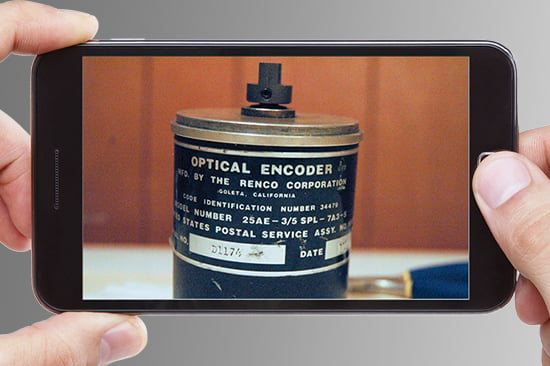Magnetic ring tachs use a hall-effect sensor to produce a signal as the sensing gear rotates past, with each tooth of the gear producing a pulse. While widely used, ring tachs can only provide coarse positional information and offer limited control capability. For example, the resolution available from a common 60 pulse ring tach is not adequate for a modern variable speed drive.
If you have a factory floor populated with perfectly functional motors fitted with tachometers, conversion to updated control systems will most likely also require retrofitting to rotary encoders. Fortunately, EPC offers many solutions that can help with this transition. Two products commonly used for tachometer to rotary encoder conversion are the Model 725 equipped with a 5PY adaptor, and the Model DR738 featuring the REO444 style flange, which is commonly applied to motors manufactured in Europe.
